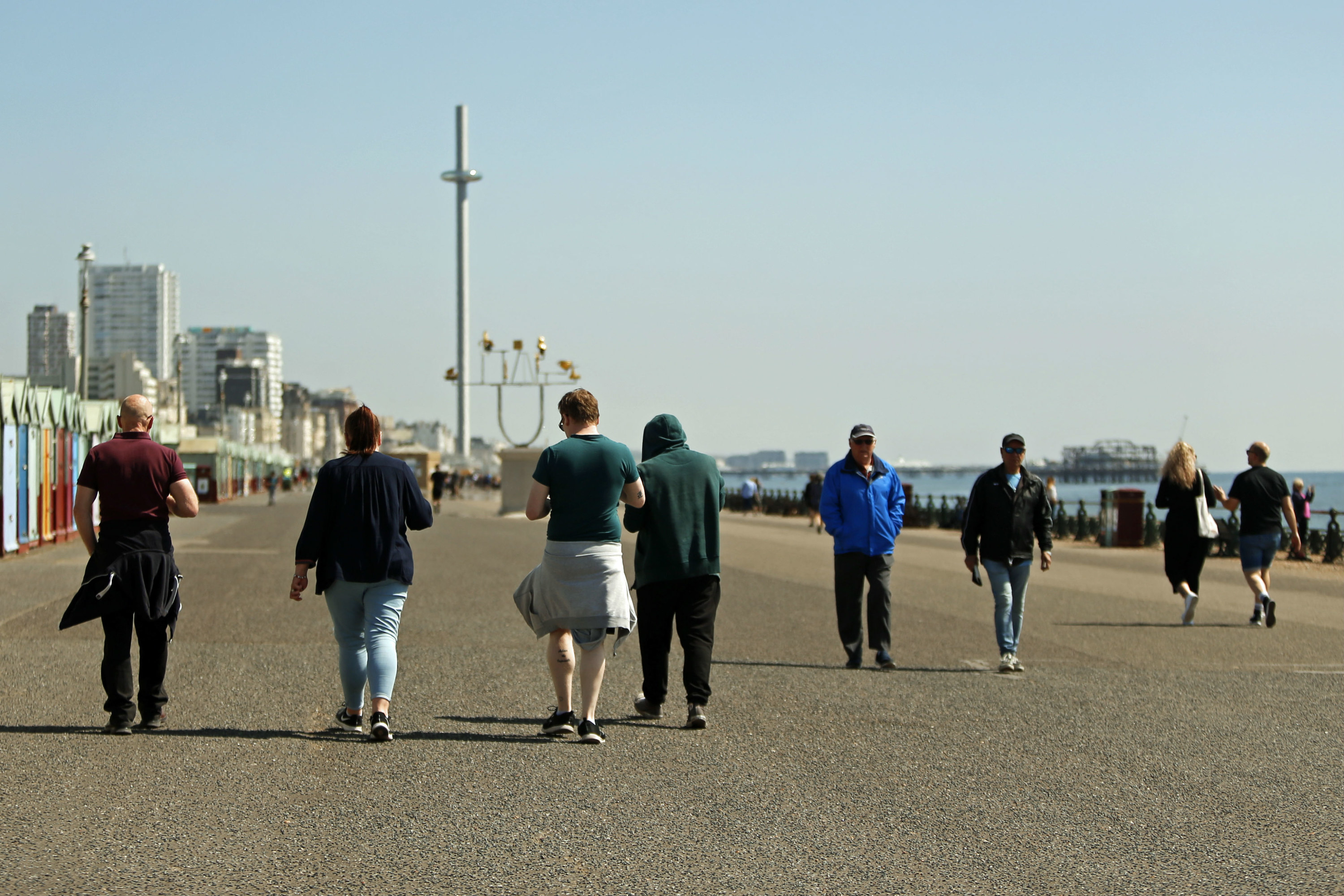
BuzzFeed News has reporters across five continents bringing you trustworthy stories about the impact of the coronavirus. To help keep this news free, become a member and sign up for our newsletter, Outbreak Today.
As coronavirus lockdowns enter their second month around the world, governments are coming under pressure to explain how and when they will reopen their countries.
The debate about how the lockdowns will be eased is being accompanied by media organisations publishing photos of people supposedly breaking social distancing rules by gathering in public places — angering people who feel they are observing the rules, and also suggesting that people’s patience with the measures is coming to an end.
But often there’s more to these pictures than meets the eye.
This weekend Luke Williams, who works in digital marketing, wrote a viral Twitter thread breaking down how a photo of a supposedly packed British seafront was not as busy as it seemed.
Ok... buckle up, have I got a thread for you on rage inducing photos! Our story begins earlier today and this "shocking" photo of people allegedly not social distancing at Bournemouth beach
The photo of Bournemouth’s seafront was published in MailOnline, alongside the caption, “Thousands of Britons ignored repeated warnings to stay home.”
Williams, who lives locally, pointed out the various landmarks visible in the photo to show that while people appeared to be flouting rules to stay 2m apart, they were in fact nowhere near each other.
You can see the row of white beach huts next to that just about visible next to the ice cream sign
And here's all those landmarks in the one original "outrage" photo. So to reiterate, and why I think I couldn't sleep... those 40 people are split across half a kilometer. ***Or to put it another way, if they were stood in a line, they'd still be 12.5m apart***
The initial tweet in his thread has now been seen over 300,000 times, he said. “I thought other local friends would find it interesting,” Williams told BuzzFeed News. “[I] did not expect it to go that far.” MailOnline did not respond to a request for comment.
The appearance of depth in any photo is affected by which lens is used, Trevor Lloyd, a senior camera operator for the BBC, told BuzzFeed News.
“Wide angle lenses (24mm or lower) exaggerate perspective, telephoto lenses (over 135mm) compress it," he said.
“The pictures from the Twitter thread are an absolutely textbook example.”
Perspective distortion demonstration in 30s. Same layout, one with digital zoom from far away, one with no zoom from closer. Samsung S8.
If you're someone who is seeing the impact of the coronavirus firsthand, we’d like to hear from you. Reach out to us via one of our tip line channels.
A similar debate is taking place outside the UK, including in Norway, where the newspaper Dagbladet published a photo of a supposedly busy street when in fact the people visible were spread out over a distance of several hundred metres.
@PatSharpX @andersheger @olabost @chicarianne @amstray @krusedUlrik @CSpange @delveien Med mindre jeg har oversett noe åpenbart står denne lykten på sørsiden av Søndre gate.
In Denmark, the website of the broadcaster TV 2 published an article of side-by-side photos to show how different lenses and framing could produce dramatically different results.
Danish news site reminds people of being skeptical of how news photographers take pictures. Here is the same place, one picture taken with a zoom lense, and the other with a wide-angle lense: https://t.co/lPMJDHXOfD
A similar conversation took place in Jacksonville, Florida, earlier this month, when a news agency was accused of using perspective in a misleading way to suggest a beach was packed, whereas an aerial shot showed people were keeping their distance.
Perspective about the controversy around the photos of the partial reopening of Jacksonville Beach. (We’re not lying.) @wjxt4 https://t.co/GG4G739mqm
It’s not just specialist lenses that make a difference: Something as simple as the position of a camera, or cropping out the foreground of a shot, can accentuate the effect of people appearing closer together than they actually are.
On Saturday, the British tabloid the Daily Express featured a packed seafront in Hove, Sussex, on its front page.
A wild debate ensued on Twitter about whether the photo had in fact been taken before the lockdown began.

In a tweet shared almost 3,000 times, Rob Shepherd, a local politician for the Green party, accused the paper of “disgraceful dishonesty” by using an old photo in order to suggest people were breaking the rules.
Jon Mills, of the SWNS photo agency that supplied the photo to the Express, tweeted a picture of the photo’s embedded metadata to show it was in fact taken over the weekend, and with an iPhone 11.
@GreenRobShep Here is the original photo with it's embedded metadata. Before we put it on our newswire we verified the camera date, interviewed the photographer and cross checked with other pictures taken around the same time. While we don't get everything right we're not dishonest
@Tomcoare @lloyd_rm @Lorqu1n @GreenRobShep They're selling ice cream tubs like that right now
Shepherd told BuzzFeed News the photo may still be misleading in the way it is cropped and framed.
“My experience is that we are being really careful here on Hove seafront, and it is unfair and unacceptable to portray us as the opposite on the front cover of a tabloid,” he told BuzzFeed News.
Peter Kyle, the Labour MP for Hove, also accused media organisations of using zoom lenses and perspective to give a misleading impression of people flouting the rules.
Hove seafront yesterday. Same spot. Same moment. Same camera. Can the media please stop popping to our beautiful seafront and using zoom lenses to give the impression people are selfishly endangering others. Overwhelmingly they are not. Photos can lie just as words can
Mills said SWNS was trying to provide fair and accurate coverage during the coronavirus crisis.
“We’ve not suggested that people are breaking the 2m rule, but definitely more people are out and about” he told BuzzFeed News
Mobility trends data from Apple supports that idea: In the weekend immediately after the UK lockdown was imposed, walking levels were 70% down when compared to before the lockdown, suggesting people were largely keeping to government rules.
However, in the weekend just gone, the Apple data showed walking levels were 56% down when compared to pre-lockdown levels, showing that people may indeed be easing off a little.
As lockdowns loosen and summer gets closer, more people will spend time outside and the debate will continue to rage around camera lenses and photographic perspective.
“From the photographer’s point of view, I don't think there is anything that sinister about it,” said Lloyd, the BBC camera operator. “It's just another tool available to you to compose a picture and create interest.
“Editorially, though, I think there are questions to be asked.”
—Additional reporting by Alberto Nardelli

